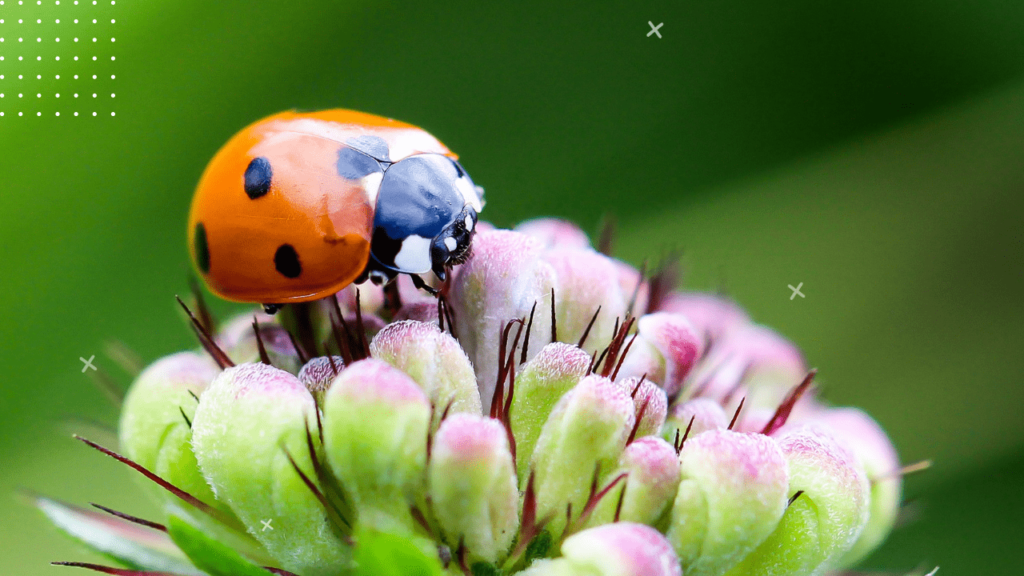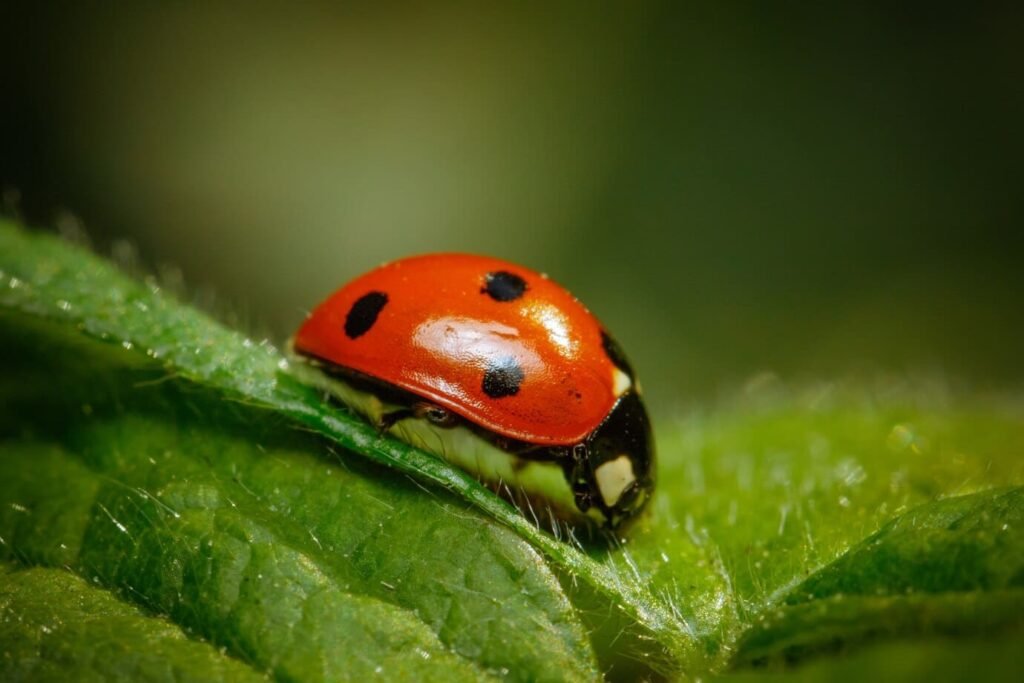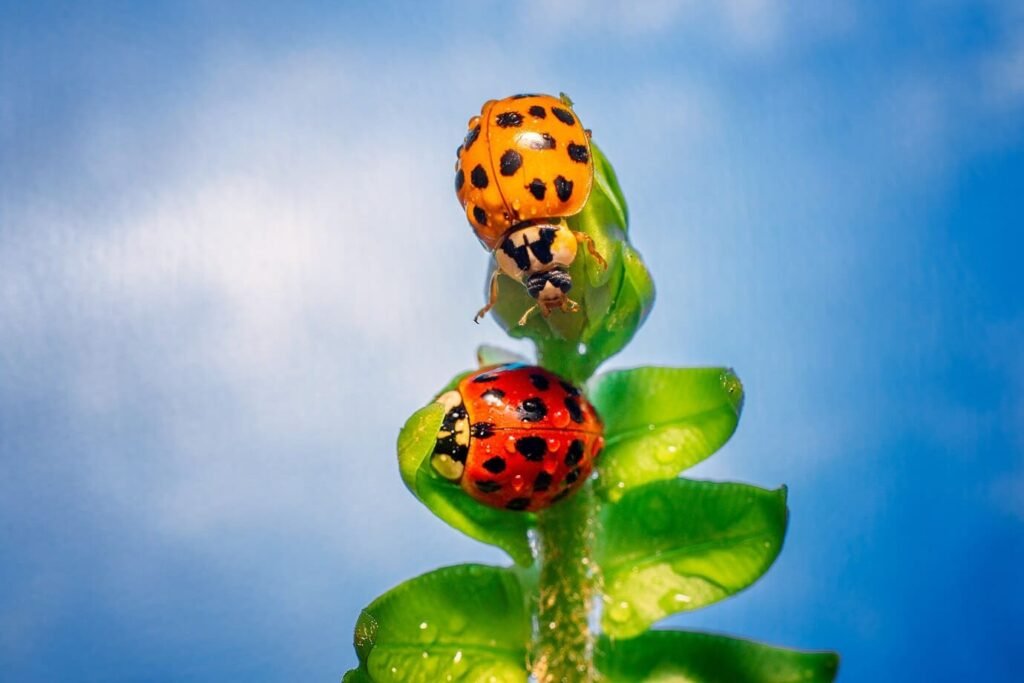


As I observed a ladybug resting peacefully on a leaf, I wondered – do ladybugs sleep? I had so many questions swirling in my head about these beloved bugs’ sleep cycles. When do they sleep? How do they sleep? Why do they need to sleep? As a ladybug enthusiast, I set out to uncover the truth about their slumber habits.
While mammals like us sleep by closing our eyes, insects lack eyelids to cover their vision. So I learned ladybugs have adapted their own natural resting postures to get some shut-eye. Turns out our little red and black dotted bug friends have some intriguing sleep behaviors worth exploring!
Ladybugs generally sleep at night and remain active throughout the daylight hours. This coincides with their status as diurnal insects guided by an internal circadian rhythm.
As cold-blooded creatures rely heavily on absorbing external heat to stay energized enough to seek food, daylight enables free foraging. But dropping temperatures at night bring sluggish inactivity signaling a resting period.
To determine if a ladybug is truly asleep, observe its lack of responsiveness over an extended period. Attempting to gently rouse it may elicit some sluggish movements if you disturb its slumber!

When bedtime arrives, ladybugs tuck their legs beneath their shells and lower their heads into their pronotums. This posture offers stability and defense from predators while resting.
Ladybugs then cling onto plants, logs, and rough surfaces near food sources. This proximity allows quick access to meals when they awaken!
These spots provide muted light, safety, and insulation. On cooler nights or during winter hibernation cycles, large groups may congregate together, bundling for shared warmth!
While exact sleep duration remains uncertain, ladybugs likely snooze six to ten hours nightly. As diurnal bugs programmed to coordinate with daylight, they typically rouse early after sufficient restoration to resume hunting.
However, if well fed from plentiful early day supplies, ladybugs may nap briefly mid-afternoon too! This further energizes them to actively pursue more food until dimming light and dropping temperatures induce overnight sleep.
During winter dormancy though, slumber lasts much longer through months-long diapause allowing impressive bodily and neural restoration until warmth returns in spring.
All animals need sleep to restore health and brain function. While still mysterious, sleep facilitates restoration, conserves energy, strengthens neural connections, and integrates memories.
Even single-celled organisms exhibit restorative sleep-like states! Research on crickets shows depriving them of proper sleep impairs movement and reduces learning indicating essential rest roles for insects too!
Insect sleep differs from mammals though in type and depth, however. They apparently lack rapid eye movement (REM) and complex dreaming associated with advanced mammal brain interconnectivity. But periodic torpid rest still enables memory consolidation and revitalization for optimized functioning across species!
Sometimes ladybugs exhibit prolonged stillness resembling sleep observations. However, other reasons exist for halted movement including:
Energy Conservation – To preserve resources, ladybugs minimize exertion by entering low-metabolism torpor. This is not true hibernation.
Predator Avoidance – Healthy ladybugs may “play dead” if highly threatened hoping perceived vulnerability disinterests predators searching for livelier prey.
Injury/Illness – Ladybugs losing leg control get stuck upside down, appearing asleep. Clueless legs while righting signal declining health.
Actual Sleep – Verify slumber by witnessing rhythmic subtle spiracle (breathing pore) movements along their abdomens during repose.
Considering context provides clues to interpret the meaning behind an ostensibly sleeping ladybug. Healthy sleep promotes restoration for a vibrant daily ladybug life!

Could dormant ladybugs dream while their metabolisms slow over winter? While most evidence indicates insect neural wiring likely prevents complex dreaming, we cannot definitively eliminate the possibility.
Insects demonstrate sophisticated navigation skills requiring impressive processing and memory centers within their miniature brains. Perhaps diapausing ladybugs mentally relive springtime adventures while recharging? We may never fully grasp insect consciousness to decode how hibernation impacts their inner worlds!
In reviewing the findings, we can definitively conclude that ladybugs genuinely sleep nightly and periodically nap when required. Their efficient sleep postures by protective food sources reveal generations of instinctual repetition.
Cooler seasonal shifts cue impressive diapause cycles allowing complete bodily and neural restoration. Lingering mysteries around insects’ elusive inner minds continue to intrigue our understanding. However, observations clearly demonstrate the biological drive for periodic rejuvenating sleep persists across all species, including remarkable ladybugs!
How do I know if a ladybug is actually asleep?
Check for a prolonged lack of movement paired with their legs tucked in and head lowered. You can also look for subtle rhythmic breathing pore movements in their abdomen. Attempting to gently stir them may lead to some sluggish responses too.
Where do ladybugs prefer to sleep?
Ladybugs often sleep on plants, logs, leaves, stems or other textured surfaces near an aphid food supply. This allows quick access to meals after waking up. They also may gather in groups during winter or cool weather for added insulation.
Why can’t ladybugs just sleep whenever they want?
As cold-blooded insects relying on ambient temperature, ladybugs must remain active during warmer daylight to hunt food needed to generate energy reserves sustaining them through resting periods. Their diurnal circadian programming aligns with absorbing heat from sunlight.
Do ladybugs dream during months of winter diapause?
While they lack advanced mammal REM sleep, we can’t fully rule out basic imagery processing during prolonged dormancy. Their small brains still support complex navigation integration so impressions could potentially replay!
How long do ladybugs normally sleep each night?
Healthy adult ladybugs likely sleep 6-10 hours nightly. They also take intermittent midday micro-naps to refuel if needed. Larval stages may involve longer resting phases while developing. Winter diapause lasts several months in protected shelters away from cold.